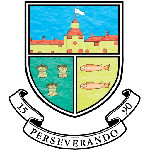Mathematics
| Mr S Robinson (Head of Team) | srobinson@conyers.org.uk | Mr J Downs | jdowns@conyers.org.uk |
| Mr K Anderson | kanderson@conyers.org.uk | Mrs K Gray | kgray@conyers.org.uk |
| Miss L Allanson | lallanson@conyers.org.uk | Mr M Black | mblack@conyers.org.uk |
| Mr P Dixon | pdixon@conyers.org.uk | Mr A Pach | apach@conyers.org.uk |
| Mr M Taylor | mtaylor@conyers.org.uk | Mx A Taylor | ataylor@conyers.org.uk |
| Mrs J White | jwhite@conyers.org.uk |
Key Stage 5 Curriculum Map
Curriculum Intent
To engage students and extend their curiosity for Mathematics by extending their range of mathematical skills and techniques and to use their knowledge to make logical and reasoned decisions in solving problems both within pure mathematics and in a variety of contexts; communicating the rationale for these decisions clearly.
Key Knowledge and Skills
Construct and present mathematical arguments through appropriate use of diagrams using the correct mathematical language and definitions
Improve their problem solving techniques: specifying the problem, identifying the underlying mathematics within the problem, collecting information, processing and representing information and interpreting results
Understand the use of modelling and create a suitable model while understanding assumptions, its limitations and the context of the situation
Improve data analysis skills using real data collected and collated within the large data set. Understanding problems, limitations, terminology and drawing conclusions
Sequence Discussion
Students require a sound understanding and skill base from GCSE. Year 12 extends their knowledge in using algebra, trigonometry, data presentation/interpretation and improvement of problem solving skills. By the end of Year 12, students must be able to deal with algebra confidently and effectively, be competent at differentiation, integration, binomial expansion, coordinate geometry, using trigonometric identities, solving trigonometric equations, using Kinematics and dealing with forces, using models, data presentation and analysis and hypothesis testing. All of these are extended in Year 13 while also considering modelling assumptions and limitations. All Year 13 topics depend upon a secure understanding of Year 12 and therefore, a large emphasis is placed on practising and revisiting sills in the form of mini tests, starter questions and weekly skills based homeworks throughout both years.
Year 12
Half Term 1
Algebra and Functions
Coordinate Geometry
Further Algebra
Half Term 2
Further Algebra
Trigonometry
Statistical Sampling
Data presentation and interpretation
Quantities and units in mechanics
Kinematics
Half Term 3
Trigonometry
Differentiation
Correlation and regression
Introduction to and using the Large Data Set
Probability
Forces and Newton’s Laws
Half Term 4
Vectors in 2D
Integration
Statistical Distributions
Kinematics
Half Term 5
Exponentials and logarithms
Proof
Hypothesis Testing
Kinematics
Half Term 6
Algebraic and Partial Fractions
Binomial Theorem
Data Set
Year 13
Half Term 1
Functions and Modelling
Sequences and Series
Regression and Correlation
Data Set
Moments
Forces and Friction
Half Term 2
Trigonometry
Parametric Functions
Probability
Projectiles
Trig in Mechanics
Parametric in Mechanics
Half Term 3
Differentiation
Numerical Methods
Normal Distribution
Application of Forces
Half Term 4
Integration
Vectors
Normal Distribution
Application of Forces

